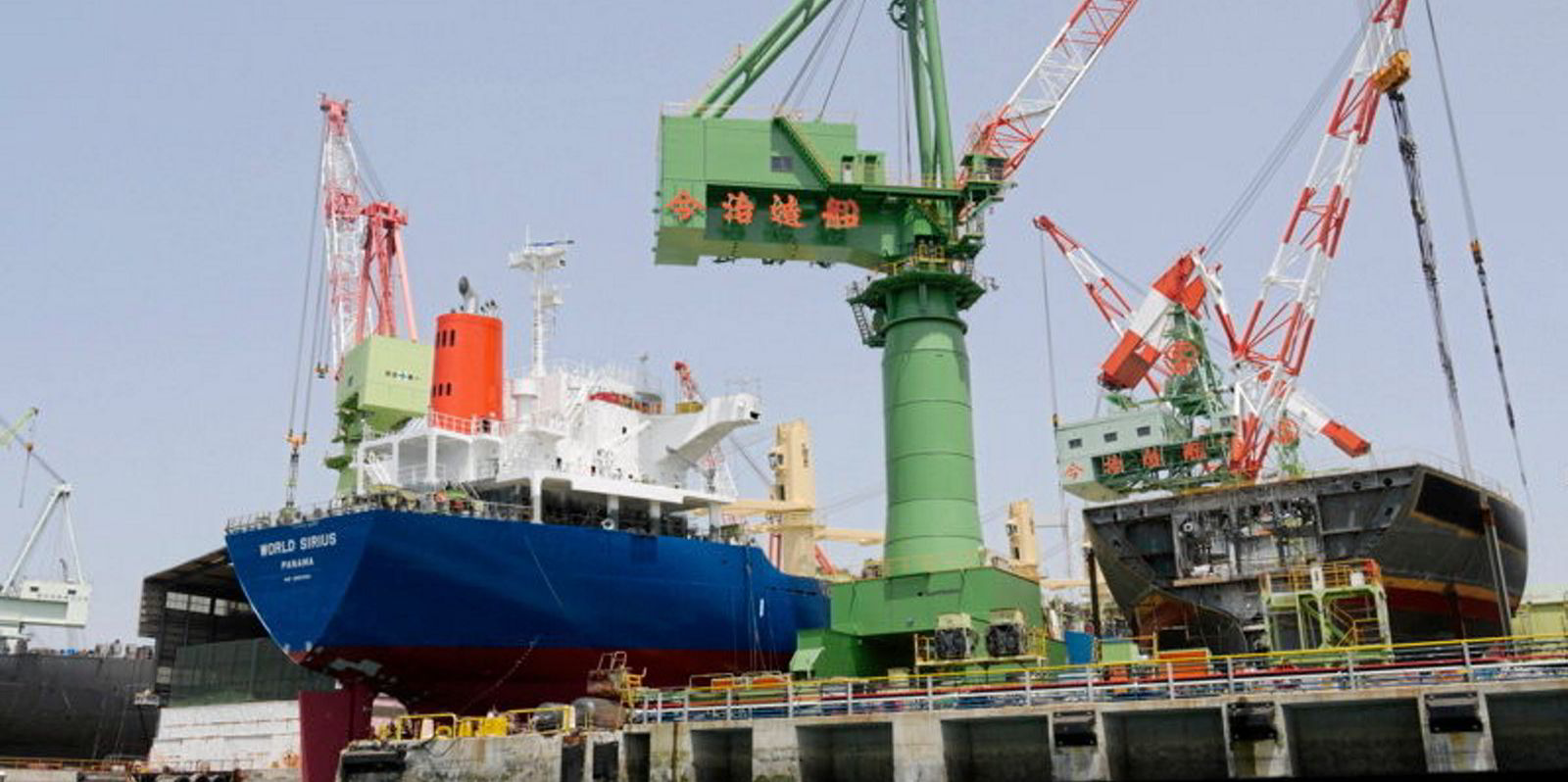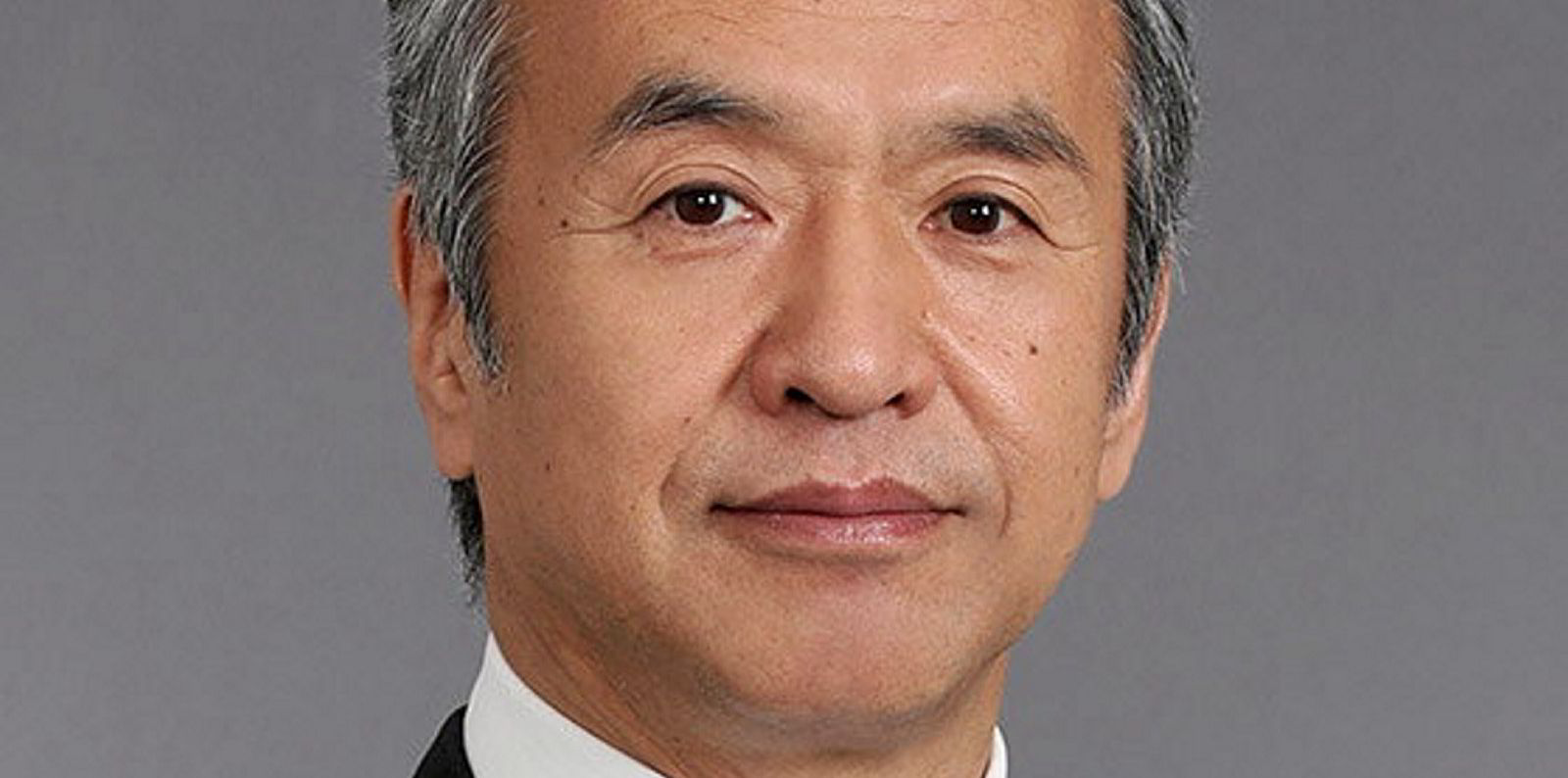Japanese shipyards are eyeing a possible return to LNG carrier construction in response to rising prices and the growing global energy crisis.
Mitsubishi Shipbuilding, a subsidiary of engineering giant Mitsubishi Heavy Industries (MHI), told local press it plans to continue in the sector through technology and design work and equipment supply for LNG carrier newbuildings.
It has a 200,000-cbm LNG carrier design that it can build at Japanese shipyards where production costs are lower than its own facilities.
Russia’s invasion of Ukraine raised concerns over the security of energy procurement in Japan.
Local commentators have stressed the need for the country to maintain engineering capability in the LNG supply chain.
Mitsubishi in effect withdrew from LNG newbuilding when it sold its Koyagi shipyard to Oshima Shipbuilding and reconfigured its Nagasaki shipyard last year.
Japan’s other LNG shipbuilders, Mitsui Engineering & Shipbuilding (Mitsui E&S) and Kawasaki Heavy Industries, have also pulled out of the sector.
Japanese yards have not been involved in any of the 86 LNG carriers ordered this year, with the South Koreans dominating the market.
Like Mitsubishi, Mitsui E&S now views itself more as a supplier of LNG shipbuilding technology and engineering, rather than a builder of LNG carriers.
Japanese yards were no longer able to compete with rivals in South Korea and China when prices were about $186m two years ago.
However, prices have risen to $230m per ship, a level at which Japan’s lower-cost yards might be able to compete.
Mitsubishi was once the world’s leading builder of LNG carriers, and its name is still highly regarded in gas circles. It has maintained Moss-type LNG carriers in its product line-up and has a unique design called Sayaendo.
MHI chief executive Seiji Izumisawa, at a recent earnings announcement, stressed the importance of maintaining LNG capability, as it will be a transitional fuel in global decarbonisation.
In March, Mitsubishi won a contract from KEYS Bunkering West Japan for a 3,500-cbm LNG bunkering vessel to be built at its Shimonoseki Shipyard & Machinery Works.
Its partnership with Imabari Shipbuilding could play a role in its LNG comeback.
In 2013, Mitsubishi struck up a partnership with Imabari on LNG, called MI LNG, covering the design and sales of Moss-type and membrane containment systems.

The partnership, headquartered in Tokyo, has not won any contracts in recent years.
Local players said Imabari is one of Japan’s most competitive shipyards and, as a builder of LNG carriers, has the potential to bring the country back into the market.
Although Imabari has a separate collaboration with Japan Marine United (JMU) on shipbuilding called Nihon Shipyard, the pair have agreed to keep LNG business out of the partnership.
JMU has its own LNG containment system, SPB, which is being marketed as an LNG fuel containment system.
Imabari has also been investing in LNG fuel tank construction to meet demand for dual-fuel bulk carriers, car carriers and container ships.
The huge rise in demand for LNG dual-fuel ships has also provided an incentive for Japanese yards to invest in producing their own LNG fuel tanks.
In a recent development, Shin Kurushima Dock Group entered LNG fuel tank construction for use on about 10 contracts it has won from Japanese operators for LNG-fuelled car carriers.
The company is collaborating with subsidiary Sanoyas Shipbuilding on the project.
The idea is to keep LNG tank construction in-house to control costs and delivery.





